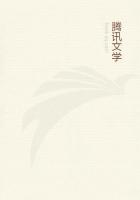Neither would you be surprised (if you recollect that Madam How is a very old lady indeed, and that some of her work is very old likewise) at that Mammoth Cave in Kentucky, the largest cave in the known world, through which you may walk nearly ten miles on end, and in which a hundred miles of gallery have been explored already, and yet no end found to the cave. In it (the guides will tell you) there are "226 avenues, 47 domes, 8 cataracts, 23 pits, and several rivers;" and if that fact is not very interesting to you (as it certainly is not to me) I will tell you something which ought to interest you: that this cave is so immensely old that various kinds of little animals, who have settled themselves in the outer parts of it, have had time to change their shape, and to become quite blind; so that blind fathers and mothers have blind children, generation after generation.
There are blind rats there, with large shining eyes which cannot see--blind landcrabs, who have the foot-stalks of their eyes (you may see them in any crab) still left; but the eyes which should be on the top of them are gone. There are blind fish, too, in the cave, and blind insects; for, if they have no use for their eyes in the dark, why should Madam How take the trouble to finish them off?
One more cave I must tell you of, to show you how old some caves must be, and then I must stop; and that is the cave of Caripe, in Venezuela, which is the most northerly part of South America.
There, in the face of a limestone cliff, crested with enormous flowering trees, and festooned with those lovely creepers of which you have seen a few small ones in hothouses, there opens an arch as big as the west front of Winchester Cathedral, and runs straight in like a cathedral nave for more than 1400 feet. Out of it runs a stream; and along the banks of that stream, as far as the sunlight strikes in, grow wild bananas, and palms, and lords and ladies (as you call them), which are not, like ours, one foot, but many feet high. Beyond that the cave goes on, with subterranean streams, cascades, and halls, no man yet knows how far. A friend of mine last year went in farther, I believe, than any one yet has gone; but, instead of taking Indian torches made of bark and resin, or even torches made of Spanish wax, such as a brave bishop of those parts used once when he went in farther than any one before him, he took with him some of that beautiful magnesium light which you have seen often here at home. And in one place, when he lighted up the magnesium, he found himself in a hall full 300 feet high--higher far, that is, than the dome of St.
Paul's--and a very solemn thought it was to him, he said, that he had seen what no other human being ever had seen; and that no ray of light had ever struck on that stupendous roof in all the ages since the ****** of the world. But if he found out something which he did not expect, he was disappointed in something which he did expect. For the Indians warned him of a hole in the floor which (they told him) was an unfathomable abyss. And lo and behold, when he turned the magnesium light upon it, the said abyss was just about eight feet deep. But it is no wonder that the poor Indians with their little smoky torches should make such mistakes; no wonder, too, that they should be afraid to enter far into those gloomy vaults; that they should believe that the souls of their ancestors live in that dark cave; and that they should say that when they die they will go to the Guacharos, as they call the birds that fly with doleful screams out of the cave to feed at night, and in again at daylight, to roost and sleep.
Now, it is these very Guacharo birds which are to me the most wonderful part of the story. The Indians kill and eat them for their fat, although they believe they have to do with evil spirits. But scientific men who have studied these birds will tell you that they are more wonderful than if all the Indians' fancies about them were true. They are great birds, more than three feet across the wings, somewhat like owls, somewhat like cuckoos, somewhat like goatsuckers; but, on the whole, unlike anything in the world but themselves; and instead of feeding on moths or mice, they feed upon hard dry fruits, which they pick off the trees after the set of sun. And wise men will tell you, that in ****** such a bird as that, and giving it that peculiar way of life, and settling it in that cavern, and a few more caverns in that part of the world, and therefore in ****** the caverns ready for them to live in, Madam How must have taken ages and ages, more than you can imagine or count.
But that is among the harder lessons which come in the latter part of Madam How's book. Children need not learn them yet; and they can never learn them, unless they master her alphabet, and her short and easy lessons for beginners, some of which I am trying to teach you now.
But I have just recollected that we are a couple of very stupid fellows. We have been talking all this time about chalk and limestone, and have forgotten to settle what they are, and how they were made. We must think of that next time. It will not do for us (at least if we mean to be scientific men) to use terms without defining them; in plain English, to talk about--we don't know what.














